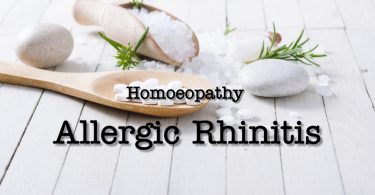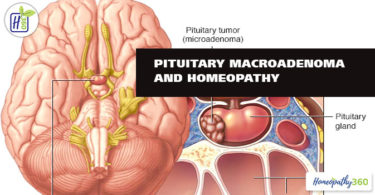ABSTRACT:India is home of an extraordinary variety of climatic regions, ranging from tropical in the south to temperate and alpine in the Himalayan north, favoured by the climate Varicella shows a seasonal trend in temperate & most common tropical settings with peak incidence during winter, spring, or in the coolest, driest months in the tropics. Varicella is worldwide in distribution and occur in both epidemic and endemic results due to morbid susceptibility that constitutes disease.
INTRODUCTION: Varicella, also commonly referred to as “Chicken pox”. It is an acute and highly contagious disease. It is caused by primary infection with the Varicella-zoster virus (VZV). Inoculation of zoster vesicle fluid into children produces varicella. INFECTIOUS AGENT: Varicella-zoster virus (VZV), a member of the herpes family. Humans are the only reservoir of VZV and disease occur only in humans. After a primary infection as Varicella, VZV remains latent in the sensory- nerve ganglia and can reactivate later causing herpes zoster (Shingles).
TRANSMISSION:Varicella-zoster virus is highly transmissible via respiratory droplets from person to person or direct contact with characteristic skin lesion of the infected person. The virus is extremely labile and this plays a significant role in its transmission. The virus can cross the placental barrier and infect the foetus, the condition known as congenital varicella.
INCUBATION PERIOD:Usually 14 to 16 days, although extremes as wide as 10-21 days have been reported.
CLINICAL FEATURES:
Pre-eruptive stage
Onset sudden and moderate, fever, pain in back, shivering and malaise.
This stage is very brief, lasting about 24 hours.
In adults, the prodomal illness is usually more severe and may last for 2 to 3 days before the rash comes out.
Eruptive stage
Distribution- The rash is symmetrical. It first appears on the trunk where it is abundant and then comes on face, arms and legs where it is less abundant. The density of eruption diminishes centrifugally.
Rapid evolution-Rash advance quickly through the stage of macule, vesicle and scab. The first to attract attention are often the vesicles filled with clear fluid and looking like “dew-drops” on skin. They are superficial in site with easily ruptured walls and surrounded by an area of inflammation. Scabbing begins 4 to 7 days after the rash appear.
Pleomorphism-All stages of rash (papules, vesicles and crusts) may be seen simultaneously at one time in the same area.
Fever- The fever does not run high but shows exacerbation with each fresh crop of eruption.
COMPLICATION:The disease is typically mild but severe complications may arise including bacterial infection (e.g. cellulitis, pneumonia), neurological complication (e.g. encephalitis), Haemorrhages (e.g. varicella, haemorrhagical), acute cerebral ataxia and Reye’s syndrome. Varicella pneumonia is rare in healthy children but most common complication in infants, adults and immune-compromised patients. Material varicella during pregnancy may cause foetal wastage and birth defects such as cutaneous scars, atrophied limbs, microcephaly and low birth weight, deafness and cerebrocortical atrophy. Children with leukaemia are especially prone to develop severe disseminated varicella-zoster virus disease.
LABORATORY DIAGNOSIS:Laboratory confirmation of varicella is detecting VZV DNA using polymerase chain reaction (PCR) or isolating VZV in cell culture from vesicular fluid, crust, saliva, cerebrospinal fluid or other specimens.
CONTROL:Usually control measures can be taken by isolation of case for about 6 days after onset of rash and disinfection of articles soiled by nose and throat discharges.
HOMOEOPATHIC APPROACH: The vital force is dynamic, can’t be attacked or affected by injurious influences caused by external inimical force that disturb the harmonious functions of life otherwise than in dynamic way. All such dynamic derangements (disease) can’t be removed from it by physician in any other way than by dynamic alterative powers of the medicines acting upon the dynamic vital force, which perceives them through the medium of sentient faculty of nerves everywhere present in the organism, so only dynamic action on vital force that remedies are able to re-establish health and vital-harmony, after change in the health of patient cognizable by our senses have revealed the disease carefully.
CONCLUSION: As, normal susceptibility is essential for the maintenance of the health, disease results from abnormal susceptibility. So, all rational therapeutics will aim at the restoration of normal susceptibility in order to cure the disease. The diseases that occur due to higher susceptibility of the person and skin those diseases need to be treated on the bases of symptom similarity respective to the name of the disease but those diseases that are recurrent and chronic in nature must be treated by anti-miasmatic medicine to clear the miasmatic block.
HOMOEOPATHIC THERAPEUTICS:
Aconitum Napellus: It is indicated in early cases, anxiety; worry; fear; restlessness is marked with red; hot; swollen; dry; burning skin; formication and numbness. Chilliness and formication down back with redness of face.
Antimonium Tartaricum:The remedy may be indicated in delayed or receding blue or pustular eruption with state of dullness, drowsiness and confusion of mind. Cold, clammy sweat. The child may feels sweaty, fussy and nausea, retching and vomiting with coated, pasty, thick white tongue.
Great rattling of mucous, but very little is expectoration or coughing and gaping consequently.
Sulphur: The remedy is indicated in pimply and pustular eruptions where the person finds impossible to keep without scratching. Itching, burning; worse scratching and washing. Fever with frequent flashes o f heat. Violent ebullitions of heat throughout entire body.
Urtica Urens: It is indicated in eruptions of skin with burning, itching and stinging sensation. Tropical fever. Symptoms gets worse from snow-air, water, cool moist air.
Antimonium Crudum: It is indicated in thick, hard eruptions with honey coloured scabs. Dry, itching skin with twitching of muscles. Tongue coated thick white, as if whitewashed. Cough worse coming into warm room, with burning sensation in chest, itching of chest, oppression. Scaly, pustular eruption with burning and itching, worse at night. Worse in evening, from heat. Feels better in open air, moist warmth.
Apis Mellifica: It is indicated in sensitive, sore skin eruptions with swelling and rosy hue. Their is sudden puffing and itching of skin is present with stinging pain. The eyelids may be swollen, red, oedematous and inflamed. The person is irritable, feels worse from heat in any form and thirst less.
Belladonna: The skin is sensitive, dry, hot, swollen with suddenly spreading eruptions. Alternate redness and paleness of skin. Indurations after inflammations. Their is marked high feverish state and No thirst during fever. Burning, pungent, steaming, heat. Perspiration only on head.
Rhus Toxicodendron: This remedy is indicated in varicella with intense itching that worse during wet rainy weather and feels better by warm, dry weather, warm application. Red, swollen skin with vesicular suppuration forms. Burning eruptions with tendency of scale formation. Extreme restlessness with continued change in position is marked. Ticking behind upper sternum. Oppression of the chest cannot get breath with sticking pains. Swollen, red, oedematous eyes.
REFERENCES:
Parks Testbook of Preventive And Social Medicine.
Organon of Medicine by Samuel Hahnemann.
Pocket manual of Homoeopathi Materia Medica & Repertory.





